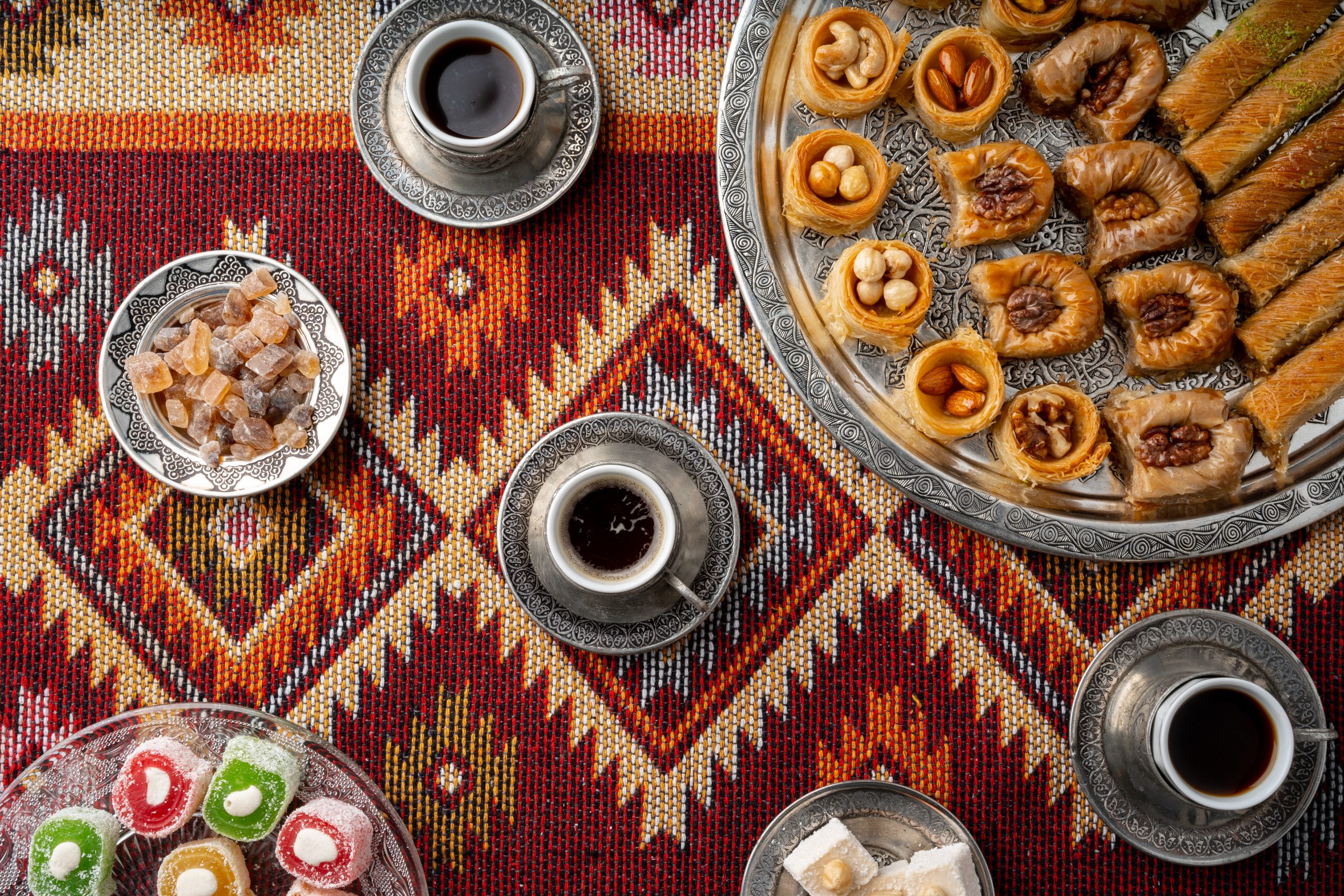Throughout history, multicultural tables extending from the Ottoman Empire to the present day have brought with them a rich culinary tradition, nourished by different geographies and cultures. The diverse ethnic groups and traditions within the vast lands of the Ottoman Empire influenced its cuisine not only through local elements but also from the regions it conquered and traded with. With the establishment of the Republic, this culinary tradition was blended with modernization and has become a legacy of flavors that continues to this day. In this article, we will explore the multicultural tables from the Ottoman Empire to the Republic and into modern times, and how these tables have been enriched over time.
The Ottoman Empire: A Culinary Legacy of an Empire
One of the prominent features of Ottoman cuisine is the use of olive oil dishes, pickles, and spices. Olive oil dishes from the Aegean region and pickles made in different parts of Anatolia became fundamental components of this cuisine. In the palace kitchen, pickles made from seasonal vegetables held great importance. Vegetables like eggplant, cucumber, pepper, and cabbage were fermented with various spices and vinegar, preserved for long periods, and served as appetizers alongside meals.
Spices were also an indispensable part of Ottoman cuisine. Precious spices were sourced from regions like India, Iran, and the Arabian Peninsula, adding unique flavors to the dishes. When combined with pickles, these spices created more intense and layered tastes.
The richness of the palace kitchen came not only from its ingredients but also from its techniques. Lamb, various game meats, seafood, and pickles were the main elements of Ottoman tables. Additionally, various pilafs, kebabs, desserts, and sherbets held significant places on the tables. For example, dishes like Hünkar Beğendi found a place not only in the palace but also in the kitchens of the people. Hünkar Beğendi, made with a puree of eggplant and lamb, was a favorite of Ottoman tables for both its taste and presentation. The pickles served alongside this dish were preferred to balance the flavors of the meal and to add different tastes to the table.
In conclusion, Ottoman cuisine, with its rich spice and pickle culture, has left behind a layered and unique culinary tradition that continues to influence our tables today.
The Influence of Balkan, Arabian Peninsula, and Mediterranean Cuisines
Throughout the vast borders of the Ottoman Empire, the influence of various cuisines from different cultures was significant. The yogurt culture from the Balkans, the spices and pilafs from the Arabian Peninsula, and the olive oil and seafood from the Mediterranean enriched Ottoman cuisine.
Balkan cuisine brought flavors like börek, stuffed grape leaves, and stuffed vegetables (dolma and sarma) to Ottoman tables. Today, dishes like dolma and sarma, which hold a prominent place in Turkish cuisine, are reflections of the Balkan influence on Ottoman food. Yogurt, introduced to Ottoman cuisine from both the Balkans and Central Asia, became a widespread food source, especially in palace dining and Anatolian folk kitchens.
Another important culinary tradition passed down from the Ottoman Empire is the pilafs from Arab cuisine. Bulgur and rice pilafs, commonly consumed in Turkish cuisine today, were enriched with spices and held a significant place on Ottoman tables.
Republican Era: From Tradition to Modernization
With the proclamation of the Republic, while Turkey embraced a more modern structure under the influence of the West, its culinary culture also underwent modernization. Although the deep-rooted Ottoman cuisine persisted, it began to be enriched with modern cooking techniques and flavors from European cuisine.
After the 1920s, Turkey’s food culture evolved under the influence of pastry-making, modern food presentation, and restaurant culture from Europe. During this period, modern cakes, creamy desserts, and profiteroles—originating from Europe—began to be introduced to Turkish tables. Alongside Ottoman syrupy desserts, milk-based sweets like sütlaç, kazandibi, and güllaç continued to hold their place on the tables.
One of the major changes in the early Republican years was the growth of urbanization and the spread of the restaurant culture. As people migrated from rural areas to cities, they brought their food traditions with them, and dishes like kebabs and kuru fasulye (stewed beans) became widely popular in urban settings. During this period, the Sultanahmet Kuru Fasulyecileri (bean stew restaurants) became one of the most popular dining spots of the Republican era.
Multicultural Tables Today
Today, Turkish cuisine continues to evolve, shaped by the Ottoman legacy, modern elements introduced during the Republican era, and the influences of an increasingly globalized world. In major cities like Istanbul, Turkish dishes are not only influenced by local flavors but are also inspired by international cuisines.
Street food, in particular, has seen a rise in popularity in recent years. Foods like simit (a sesame-crusted bread) and döner (a type of kebab), which were sold by street vendors during the Ottoman period, remain integral parts of Turkish cuisine today. Döner, in particular, has transcended Turkey’s borders to become a globally recognized Turkish delicacy.
Although olive oil dishes are often associated with Aegean cuisine, zeytinyağlı (olive oil-based) stuffed vegetables, artichokes, and green beans remain highly popular throughout Turkey. Olive oil, once a staple of traditional cuisine, is now commonly used in modern dishes as well.
The multicultural tables extending from the Ottoman Empire through the Republican era to the present day are a reflection of Turkey’s historical legacy and geographical diversity. This rich culinary tradition, which began during the Ottoman period, modernized with the Republic, and continues to evolve today, celebrates the confluence of different cultures coming together. The dishes we enjoy today not only represent our past but also the legacy of flavors created through the blending of various cultures. These multicultural tables are the perfect way to celebrate the richness and diversity of Turkish cuisine.


